
WIP - Fedora Project: New UX to Complete Migration to Forgejo
Overview
On June 17, 2025, I was eager to return to my passion for Linux and the open source community by becoming a new member of the Fedora Design team. I have been using Linux since Fedora 7 (Moonshine) and continue to rely on Fedora and Red Hat software to this day for my own infrastructure.
On December 4, 2024, the Fedora Council announced its decision to move the project towards Forgejo as the new git forge. This decision was made because Fedora’s current forge solution, Pagure, failed to gain mainstream traction. As a result, the project has had to maintain the Pagure git forge themselves and use it to build Fedora releases at the same time. Additionally, GitLab is also being used to track tickets for design assignments. This lack standardization of tools still results in communication gaps and difficulty for both experienced users to collaborate and new users to get onboarded. However, the steep learning curve for Forgejo, the difficulty logging in with a Fedora account, and the lack of accessibility with the UI are what has haulted the successful switch to the new system.
With my past experience designing for multiple B2B products within EduTech, this was the perfect project for me to jump into. The goal is to take my unique UX approach and optimize it with open source LLM models.
My Role
As a new member of the Fedora Design Team, I received permission to restart the UX work for Fedora Project's migration to Forgejo using the following methods:
- Design Brief
- Sketches
- User Personas
The following methods will also be used for future deliverables:
- Wireframes
- Hi-Fi Mockups
Stakeholders
- UX Designers
- Project Managers
- Engineers
Tools
- Penpot
- Google Docs
- Deepseek-R1
- IBM Granite 3.3
What is the Fedora Project?
The Fedora Project is an independent organization overseeing the development of Fedora Linux. It is mainly sponsored by Red Hat, and serves, along with CentOS Stream, as the experimental branch for Red Hat Enterprise Linux (RHEL). Red Hat Enterprise Linux is an enterprise Linux distribution for Enterprise environments.
What is Forgejo?
Forgejo is an open source GPLv3-licensed SaaS application for hosting version control using Git, along with bug tracking, code review, continuous integration, kanban boards, tickets, and wikis.
1
Early Sketches & Redirection
As a new design team member, when I started looking at this GitLab ticket for a commit table redesign for Forgejo, I began exploring ideas based on the last contributor's mockups of what a revised table could look like. My previous iterations were largely focused on different ways of enhancing search and sorting from a convergent lense. I also utilized my unique way to highlighting small UI changes with sticky notes on top of sketches. There isn't a lot of detail to provide for these sketches as I was confused about why I was doing this.
After this exercise, it became clear to me we did not define the customer problem that is being solved with the Forgejo switch. I was not confident that this work would lead to customer-centric UX. To address this concern during my first team meeting via Jitsi Meet, I presented these sketches to the team and explained how the lack of foundational research made it difficult to start designs. We then came to an allignment on next steps to redirect the focus to be on our users rather than UI components.
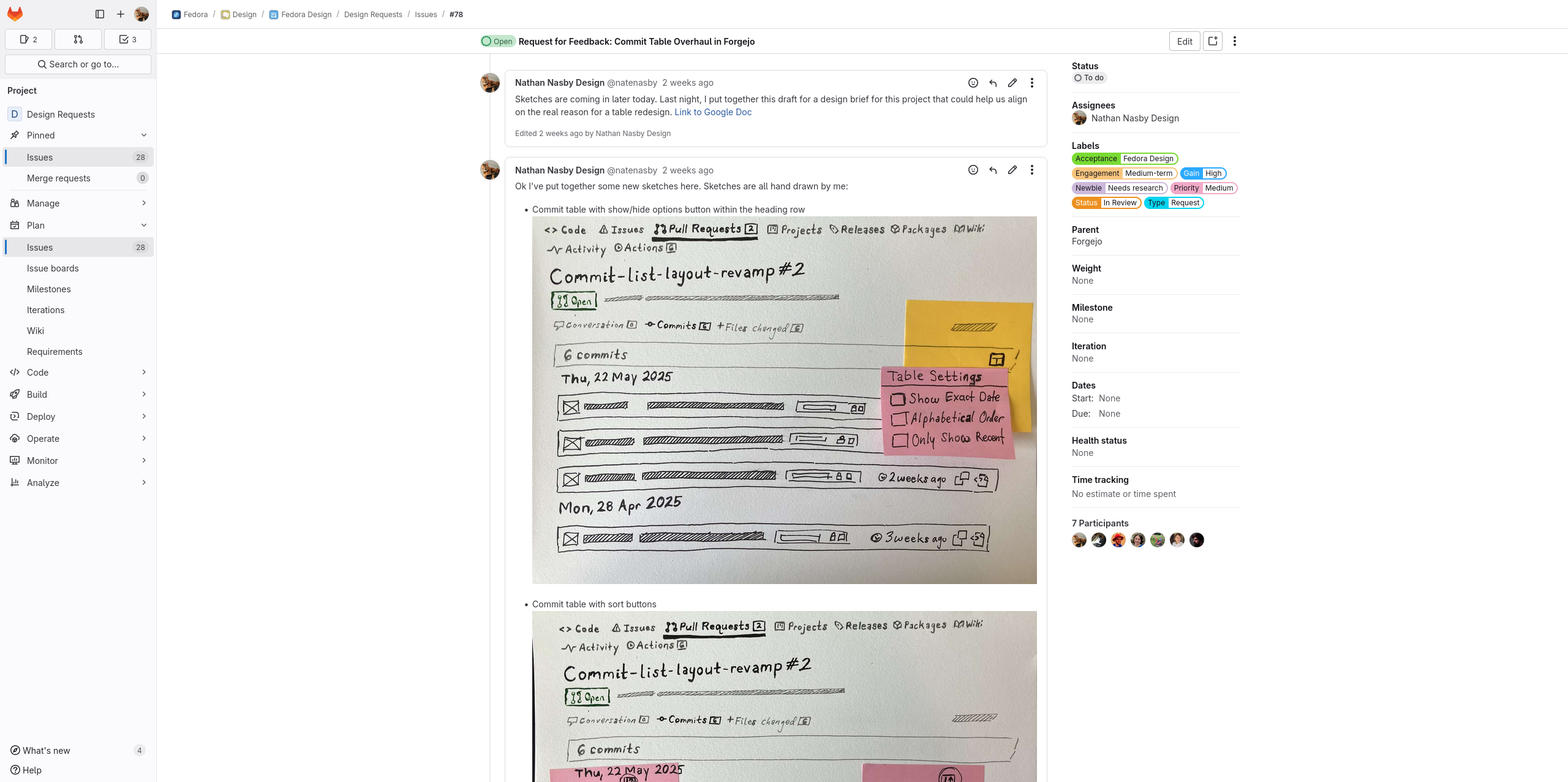
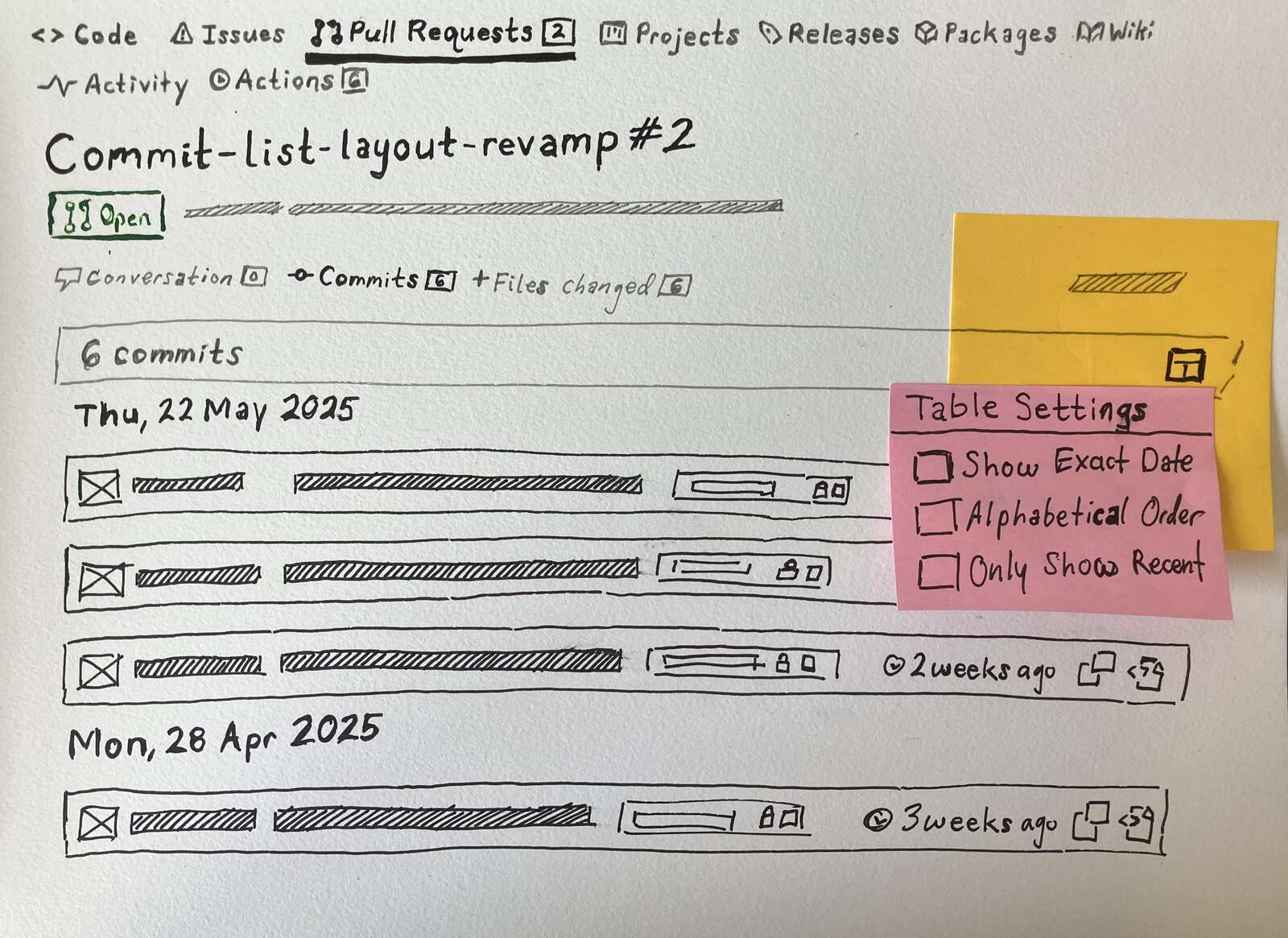
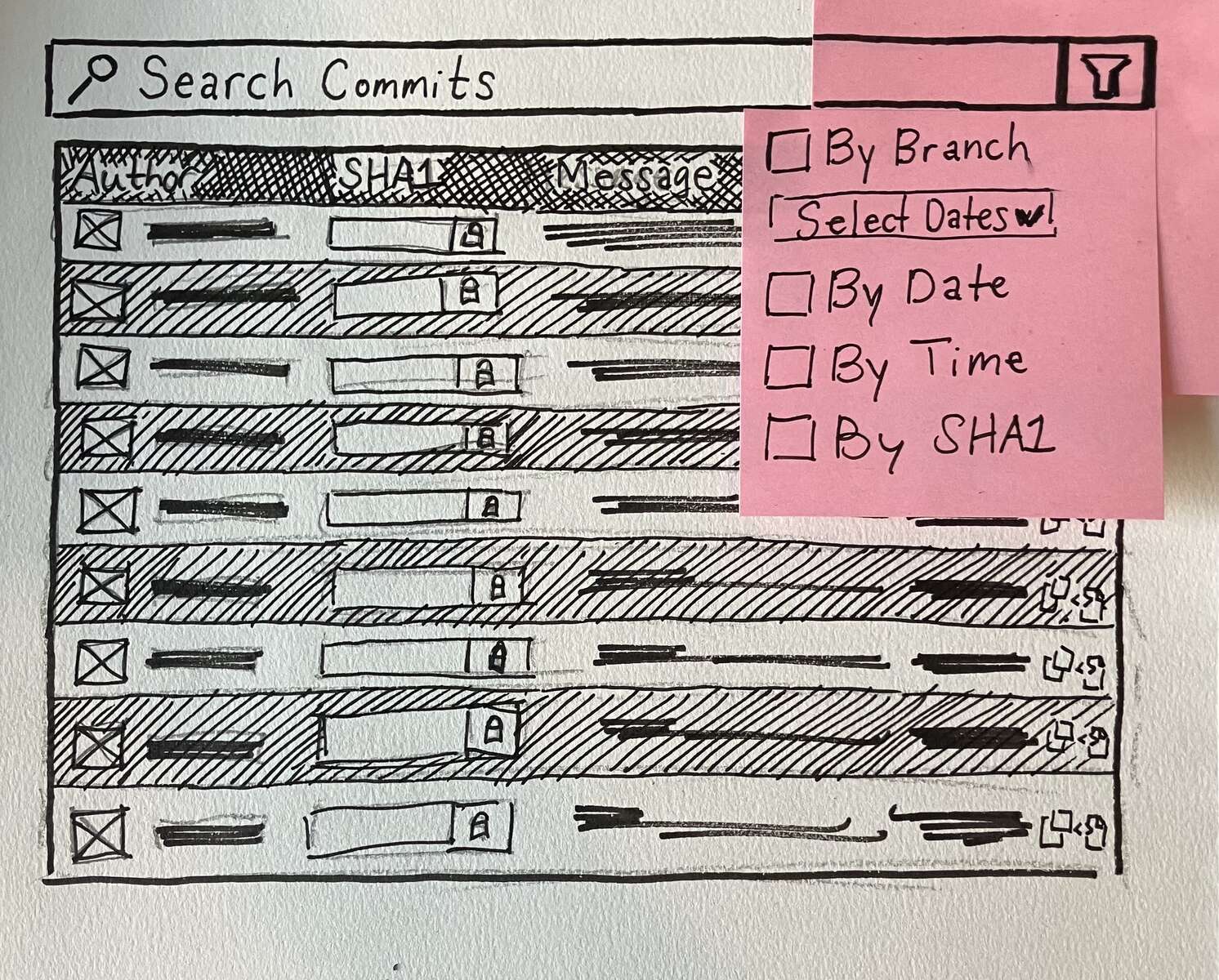
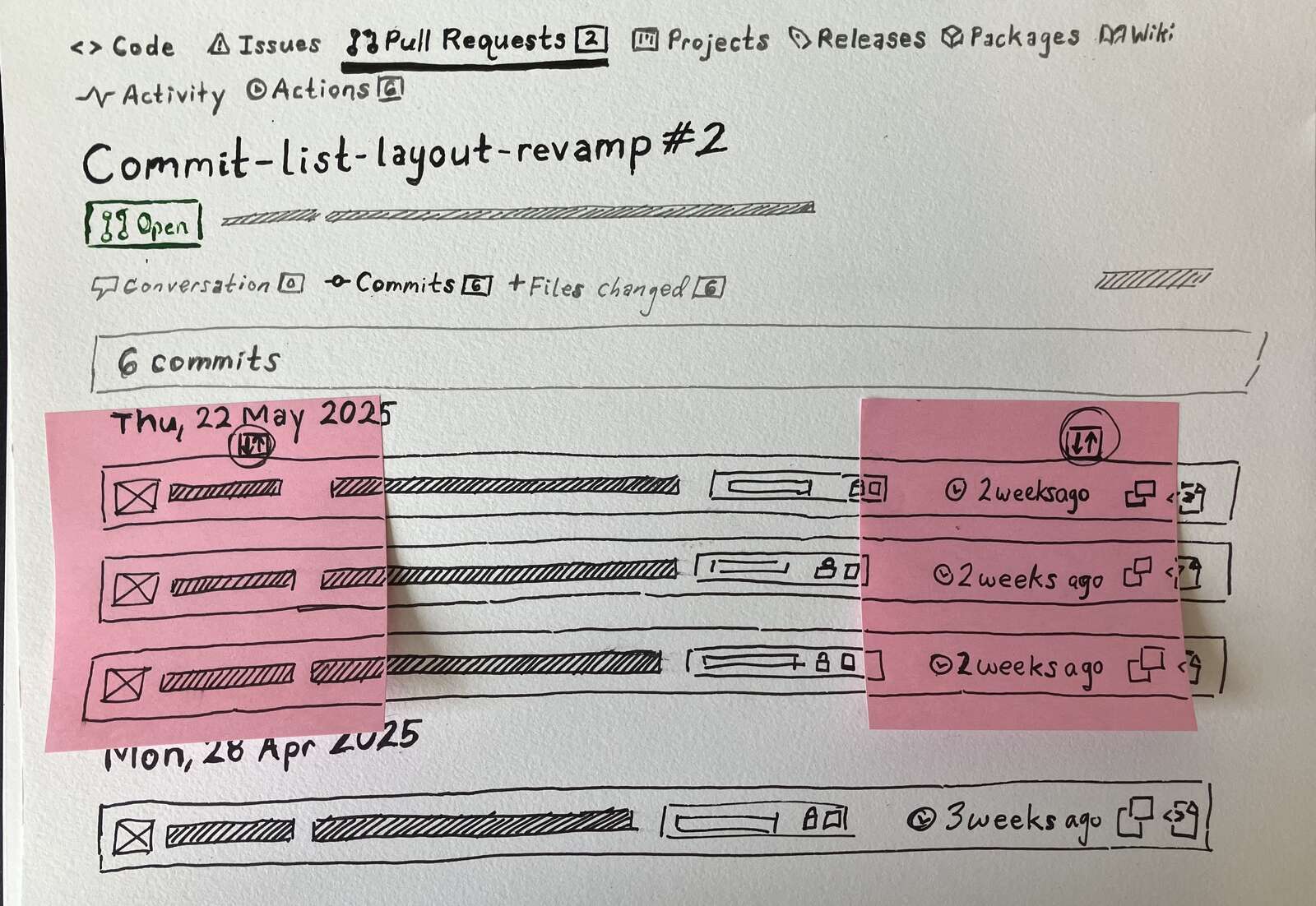
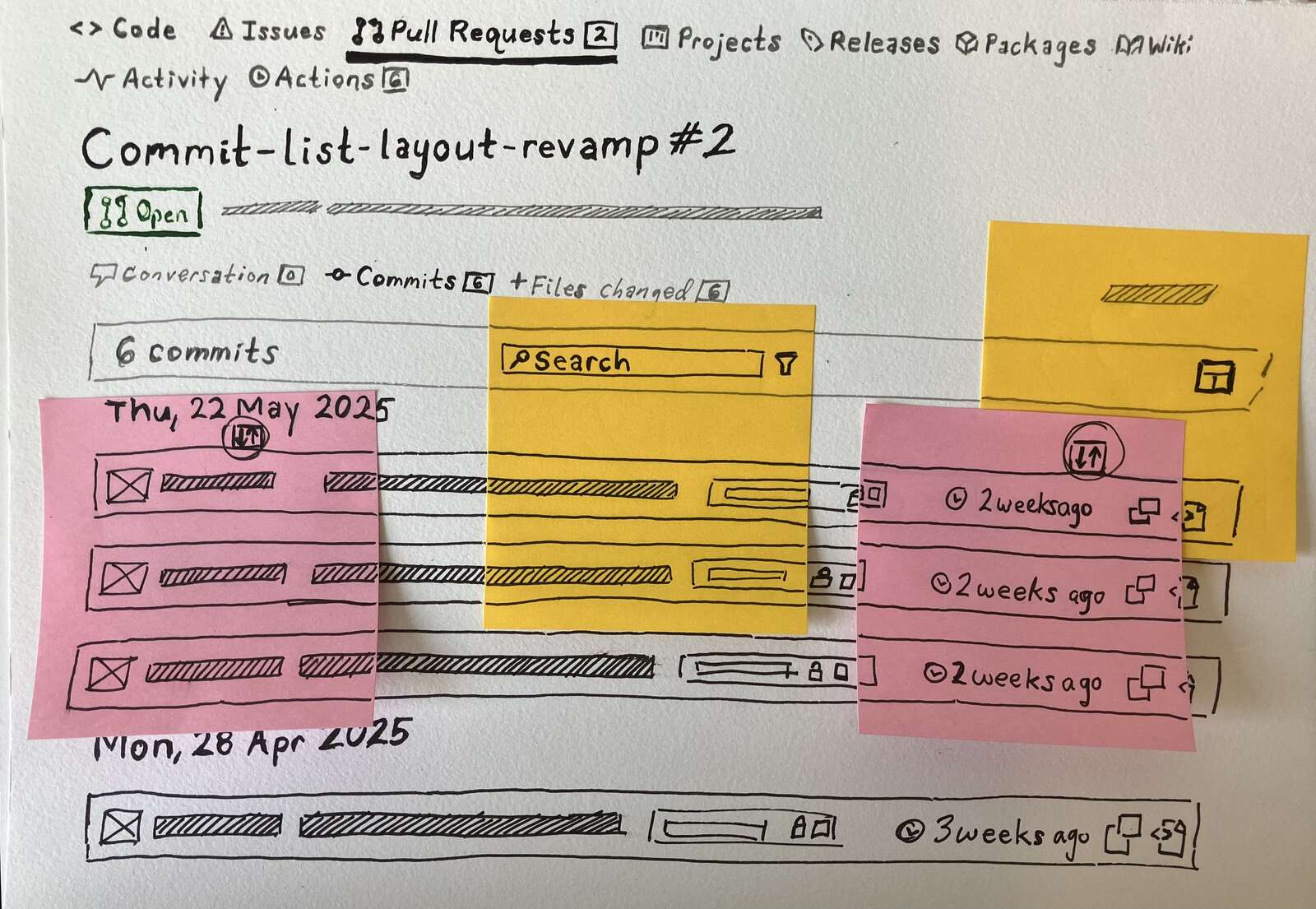
2
Guiding Principles
After my first meeting as a design team contributor, I found it essential to formulate these guiding principles before making any other contributions to this project, inspired by the spirit of open source and a commitment to integrity:
- Literal interpretation of the Fedora Project Contributor Agreement - to protect the integrity of Fedora and guarantee no future scrutiny, I will only use open source LLM models under project-approved licenses to optimize deliverables when appropriate. It is also vital that all of my interactions with these models remain local on my PC to ensure complete privacy. It is too great of a legal risk to use proprietary models including OpenAI's GPT-4 or Google's Gemini through the cloud as it is uncertain how future laws will interpret this use for open source projects.
- No AI generated images - to further guarantee no legal scrutiny in the future, I promise to only use images licensed under CC BY, which is a license approved by Fedora. Again, avoiding legal risk.
- Disclosing when AI was used - to promote the socially responsible use of AI, I promise to include disclaimers in every Penpot file I create where local LLMs were used for optimization.
3
User Personas
To create these personas faster, I first enlisted the help of IBM-Granite-3.3-8B-Instruct (Apache 2.0 License) to generate 15 different first and last names that represent the diversity of the Fedora community. Starting with three names from the list, I generated content of the first three personas using Deepseek-R1-Distill-Qwen-14B (MIT License) and designed the pages in Penpot. Besides using AI for speed, it would have been impossible for me to manually read through 93 user stories to create personas. I put the prompts I used in this Google doc. Per my guidelines, the images in all of the personas are not AI generated and the required attributions are included as a caption.
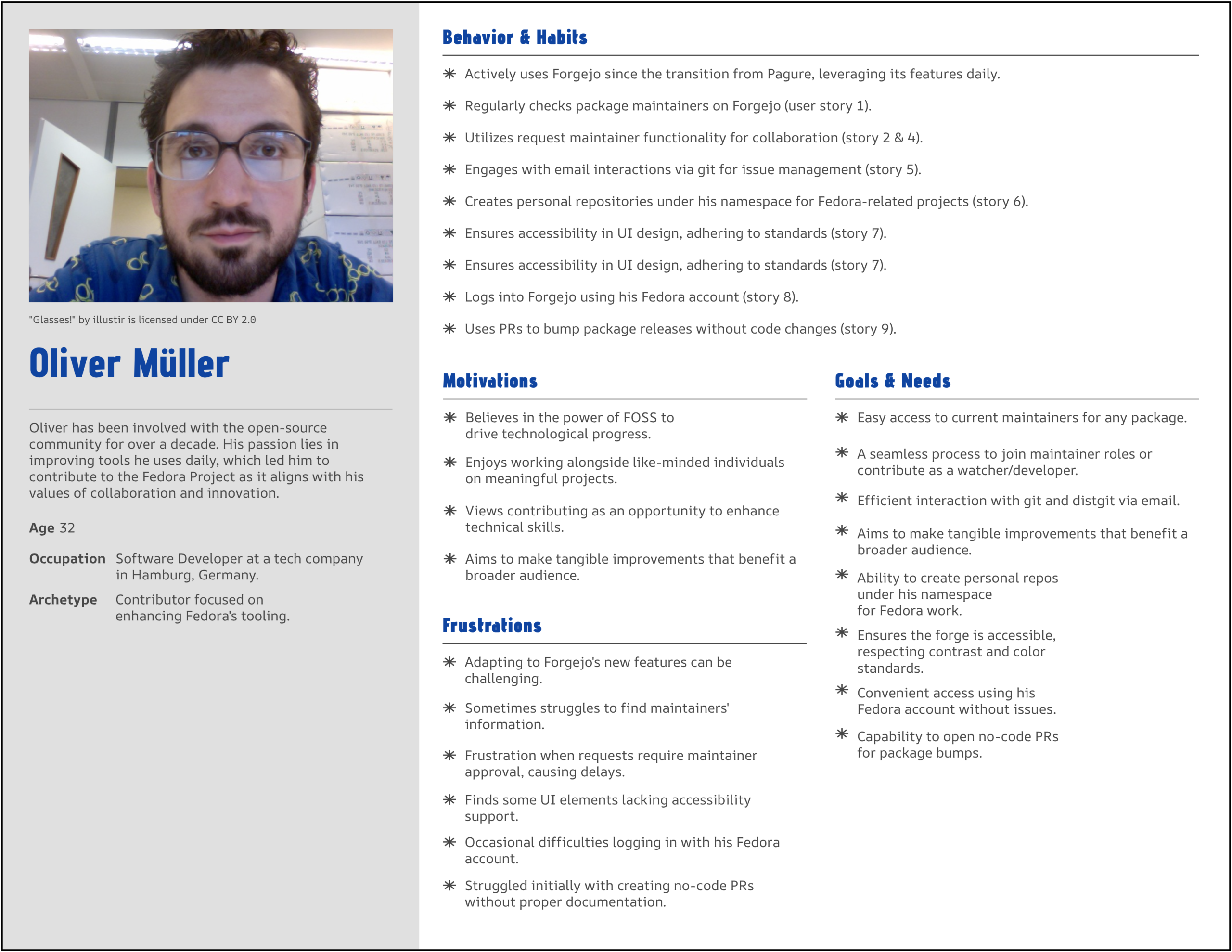

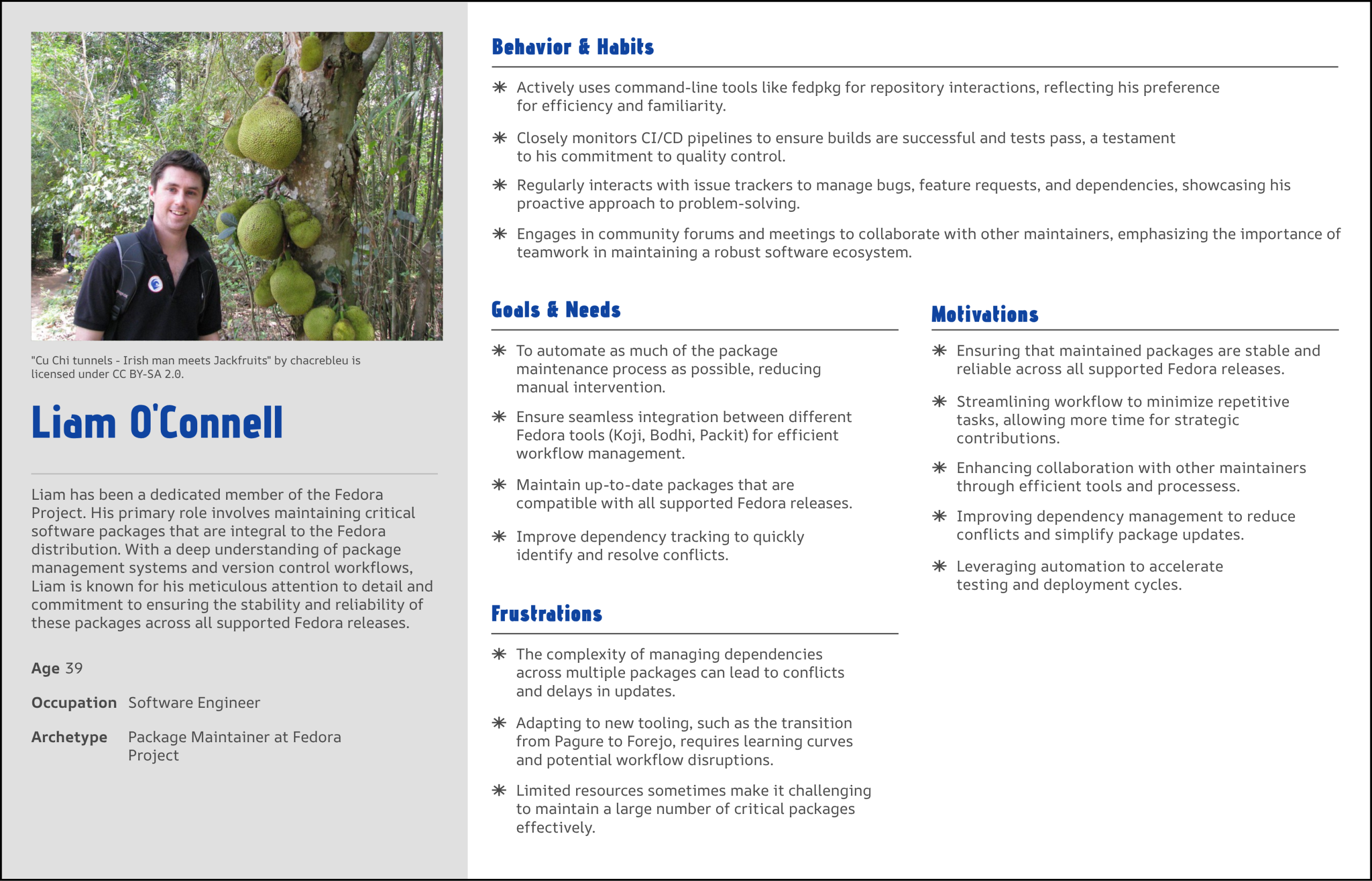
During my second design meeting, engineering gave feedback stating they did not see any personas representing non-engineering roles like graphic design, documentation, and marketing. This feedback was crucial to having full representation, absent from the early deliverables, in the UX process of this project. I then responded to the feedback by creating three additional non-engineering personas with Deepseek. The additional personas also represent the diversity of skillsets of the community. Some users immediately want to adopt new technology, while other users are more resistent to changing their existing workflows at the expense of stability. The other UX Designer I'm working with was gracious enough to create a dedicated GitLab ticket for this deliverable.
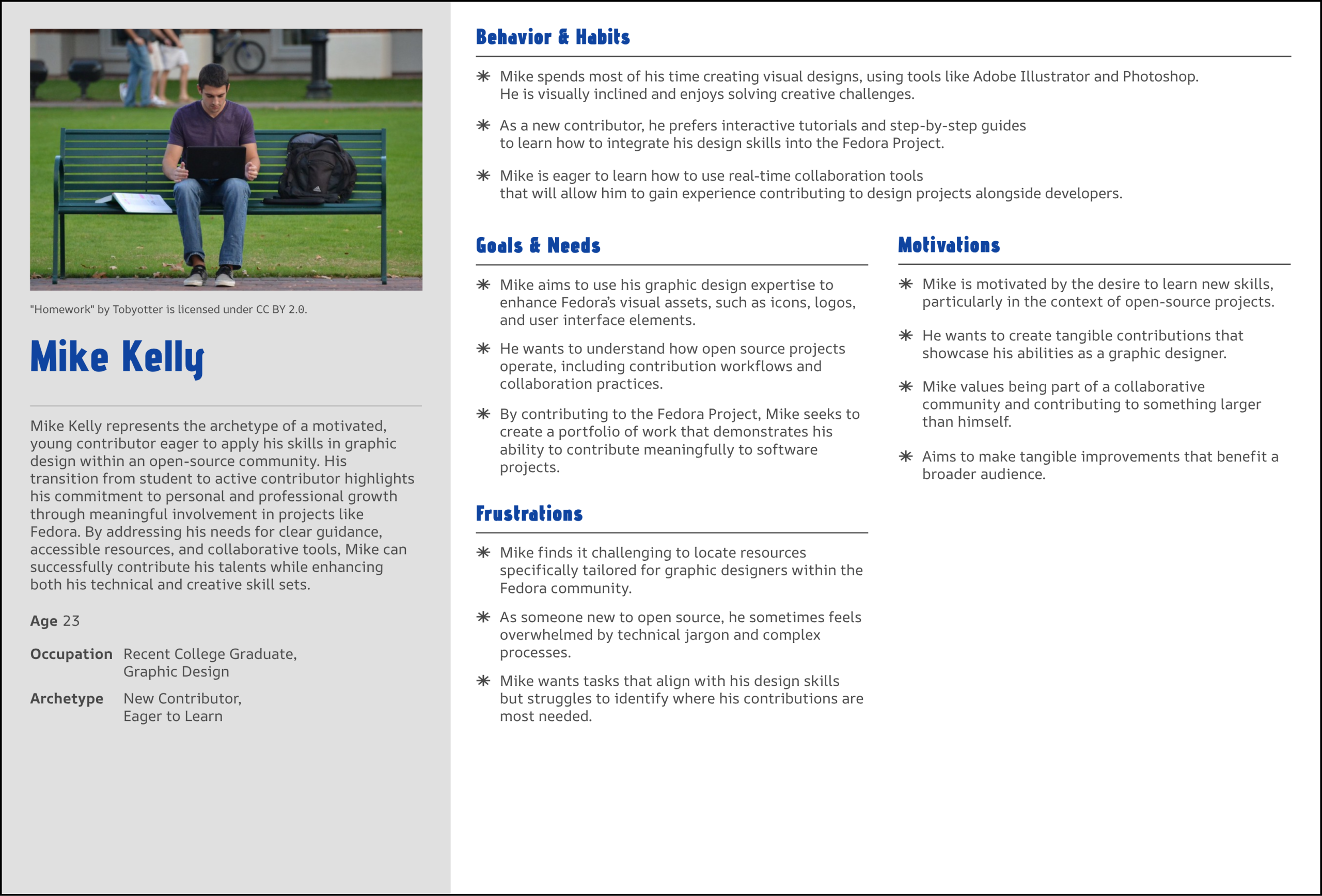
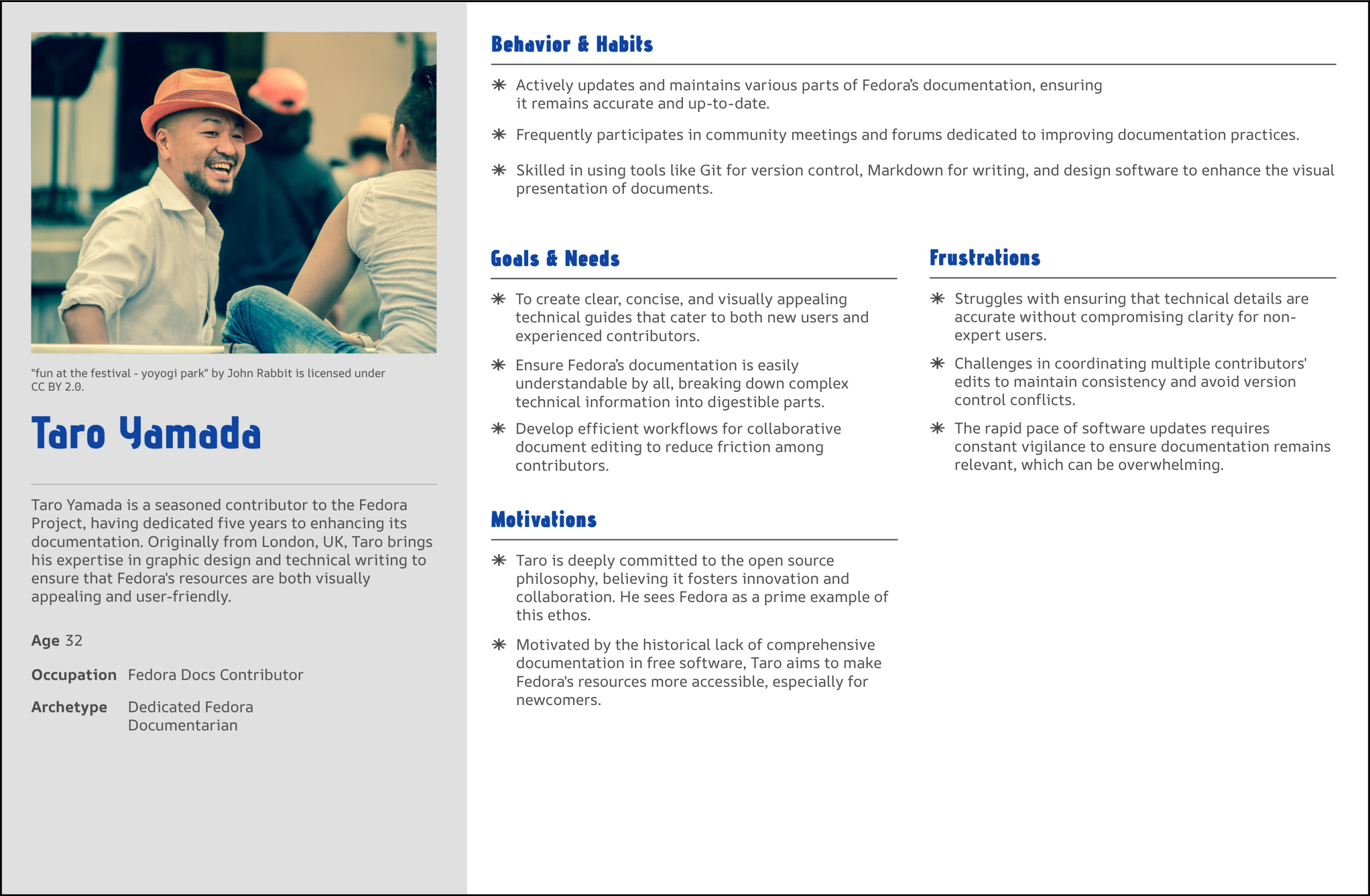
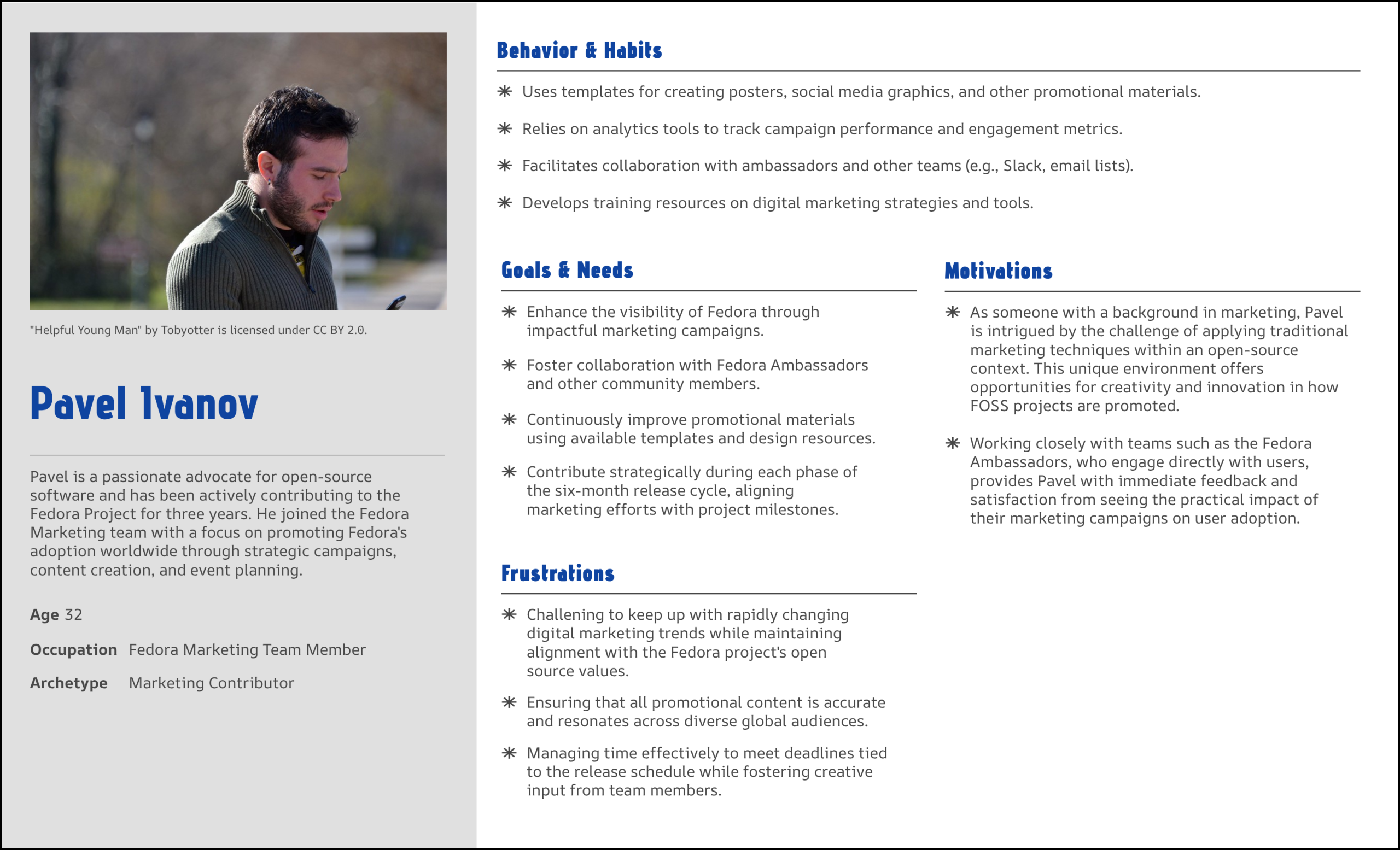
4
Next Steps
For ongoing updates on this project and further reflections on open-source UX, I’ll be posting on my blog. I encourage readers to follow along as the migration to Forgejo evolves.
Selected Works
Copyright © Nathan Nasby


